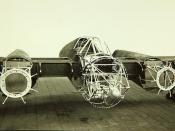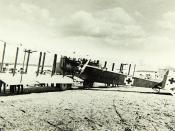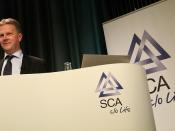All company accounts are prepared in accordance with the various accounting laws and regulations, and are designed for a wide audience. Therefore, to obtain data for specific purposes it is frequently necessary to submit the numbers to specific analysis. Following is an analysis of The P&G Corporation's year 2004 and 2005 financial statements. This analysis is intended to, through the calculation of ratios; assess the short-term and long-term liquidity, in addition to the profitability of The P&G Corporation.
Short-term liquidity is the ability of the company to meet its short-term financial commitments. Short-term liquidity ratios measure the relationship between current liabilities and current assets. This helps us measure the P&G's ability to sell inventory, to collect receivables and to pay current liabilities. Following is the Current Ratio, the return on sales ratio, earnings per share (EPS), debt ratio, and the price earnings ratio. These measures are concentrated upon the current assets and current liabilities to asses the P&G Corporation's ability to meet their financial commitments as they become due.
Current Ratio
Current Ratio= Current Assets $20,329.00 = 0.81189
Current Liabilities $25,039.00
For the 2005 financial year, P&G Corporation had $20,329.00 in total current assets and $25,039.00 in total current liabilities. This gives the company $0.81 for ever dollar of current liabilities. This could be seen as a secure situation, but by looking into the 2004 financial year Statement of Financial Position, it can be ascertained that the company had $0.30 for ever dollar of current liabilities. That is $17,115.00 in total current assets and $57,048.00 in total current liabilities. This shows that P&G Corporation increased its ability to pay debts (The P&G Corporation, 2005) "Free Cash Flow. Free cash flow is defined as operating cash flow less capital spending. The company views free cash flow as an...


